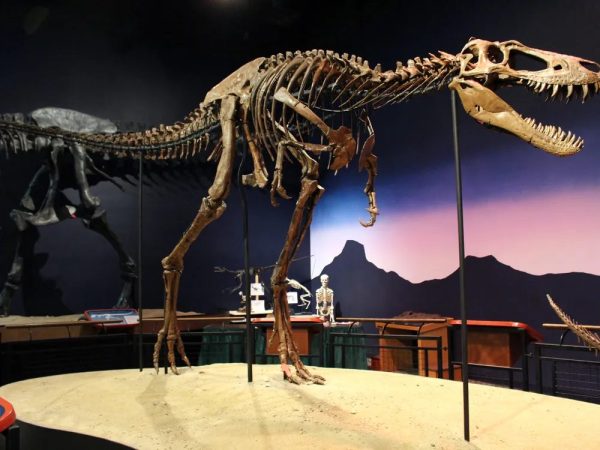Nanotyrannus, which means “dwarf tyrant,” is a dinosaur that has been the subject of intense debate and scrutiny in the paleontological community.

It is often considered a distinct species of tyrannosaurid, separate from T. rex, due to its smaller size and unique anatomical features. Some scientists, however, argue that Nanotyrannus might not be a separate species at all, but rather a juvenile T. rex.
Nanotyrannus was a relatively small carnivorous dinosaur, measuring around 20 feet in length, while the adult T. rex could reach lengths of up to 40 feet. Despite its smaller stature, Nanotyrannus possessed many characteristics typical of the tyrannosaurid family, including serrated teeth, powerful jaws, and a bipedal stance. Its size and appearance have fueled the debate over its classification.

The story of Nanotyrannus begins in the 1940s when a fossil specimen was discovered in Montana, USA. Initially thought to be a juvenile T. rex, it wasn’t until the 1980s that the idea of Nanotyrannus as a distinct species gained traction. The controversy arises from the scarcity of Nanotyrannus fossils, making it challenging to definitively confirm its classification.
Those who argue for Nanotyrannus as a separate species point to distinctive features in its skeleton, particularly in the skull.
They suggest that the presence of two small crests above the eyes and other subtle differences in cranial structure set it apart from T. rex. Additionally, some proponents of Nanotyrannus as a distinct species claim that it had longer, more slender legs relative to its body size, a characteristic not seen in T. rex.

On the other side of the debate, some paleontologists contend that the differences between Nanotyrannus and T. rex can be attributed to age-related variations. They propose that Nanotyrannus might represent a juvenile T. rex rather than a unique species. These scientists argue that some of the perceived distinctions could be a result of the way the bones grew and fused as the dinosaur matured.
The Nanotyrannus enigma continues to be a topic of intense research and discussion within the field of paleontology. Advances in technology and the discovery of new fossils may hold the key to resolving this mystery.
By studying more specimens and using advanced techniques such as CT scanning, scientists hope to gain a better understanding of Nanotyrannus and its place in the tyrannosaurid family tree.

Nanotyrannus, the “tiny tyrant” of North America, remains one of the most captivating puzzles in the world of paleontology. Whether it is a distinct species or a juvenile T. rex, the debate surrounding its classification adds to the richness of our understanding of prehistoric life.
As ongoing research brings new discoveries to light, we inch closer to unlocking the secrets of this miniature marvel from the distant past and gaining a clearer picture of Earth’s ancient ecosystems.





